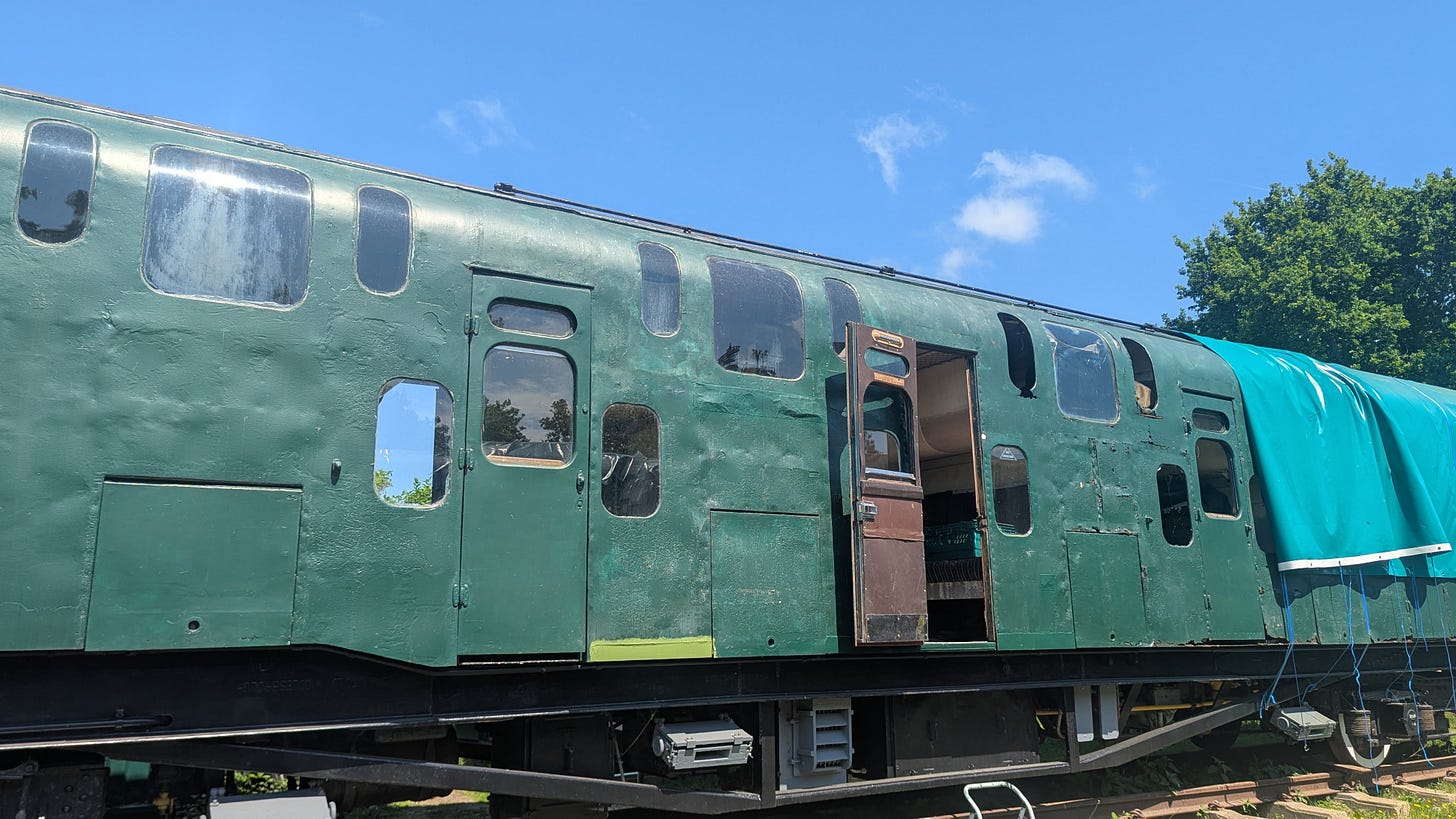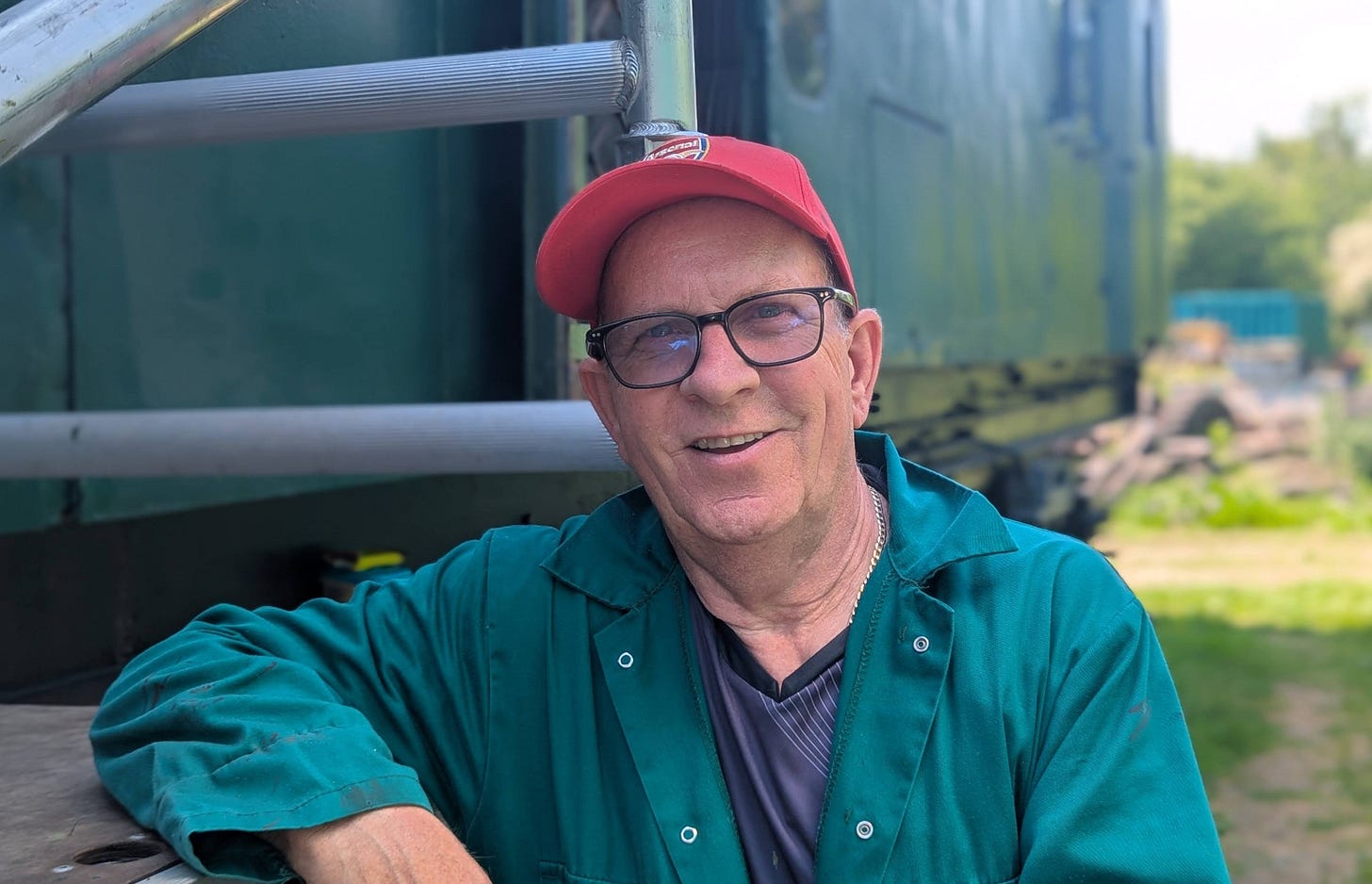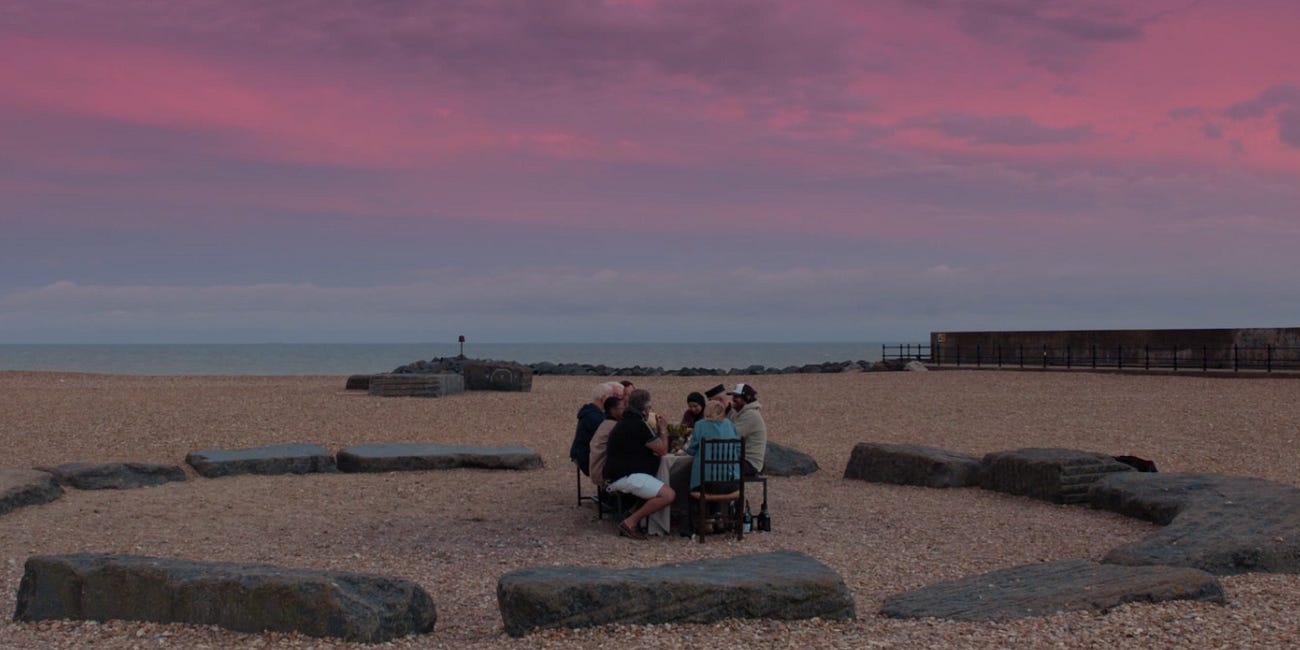🚆 Tracking down a unique part of Britain’s railway history in a field outside Folkestone
Plus: Napier Barracks now expected to close this year, and drink-driving suspect arrested after crash involving car and van
Last week Eurostar announced plans to introduce double-decker trains on its routes from London, which it said would be “the first ever” to operate on the UK network. But those in the know will tell you that claim is not entirely true, and the evidence of Britain’s post-war experiment with double-decker rolling stock can be found in a field just outside Folkestone…
Anyone who has done much travelling by train on the continent will be familiar with the sight of double-decker trains, whether on busy commuter routes or on longer high-speed runs. Britain may have pioneered the railway, and this year celebrations have marked the 200th anniversary of the Stockton and Darlington Railway, the world’s first public line to use steam locomotives. But being first has had its downsides.
Victorian engineering ingenuity and the ‘railway mania’ of the 1840s saw track—and the associated tunnels, bridges, cuttings and embankments—spread to all corners of the land. Unfortunately, as railway expert Mark Smith commented in The Times last week, our forebears gave little thought to future-proofing the infrastructure that remains in use to this day.
“Brunel famously proposed—indeed, built—a larger, smoother, faster 7ft gauge railway,” Mr Smith wrote in reaction to the Eurostar announcement, “but even his determination could not overcome the demand for a national standard track gauge, and with it a conservative national loading gauge: the permitted height and width of rail vehicles.
“Meanwhile on the continent our neighbours had time to think. They adopted our standard 4ft 8.5in track gauge (mostly) but with a more generous height and width. This not only makes mainland European trains more roomy to this day, it allows double-deck trains to run in many countries, something we Brits can only dream of.”
Whether Oliver Vaughan Snell Bulleid CBE, the chief mechanical engineer of the Southern Railway, was much of a dreamer it is hard to say. But he was the man responsible for an experimental train which ran between London and Dartford for more than two decades: the SR Class 4DD.
Although it could be argued the 4DD was more of a split-level train rather than a true double-decker—what with having to use the same tracks and tunnels as more conventional units—it did represent an attempt to deliver something more akin to the trains we now take for granted on continental railways.
“They did not find favour with commuters or British Rail,” Mr Smith said of the 4DDs, of which only two prototypes were ever built. The trains were incredibly slow to board and offload, meaning longer stops at stations when compared to regular trains. And the carriages, which lacked adequate ventilation, could become uncomfortably warm and stuffy. But despite their evident drawbacks, the two units continued in service from 1949 to 1971.

When they were finally withdrawn there seemed to be little appetite for these unique units to be saved and preserved for future generations, much to the dismay of many railway enthusiasts.
“People on online forums kept on saying how it was criminal that the National Railway Museum hadn’t taken the 4DD into their collection when it was withdrawn from service in 1971,” said Mark Hickmott, chairman of the Bulleid 4DD Group, which is now working to preserve two remaining motor units at a site outside Sellindge. “Quick answer: they had no interest in restoring boring Southern Region rolling stock, only steam trains.”
Just two driving motor cars survived after the 4DDs were withdrawn in 1971. One ended up at the site of the Northamptonshire Ironstone Railway Trust, and the other in Sellindge.
Both fell into disrepair in the decades that followed, but eventually the pair were acquired by the Bulleid 4DD Group with a view to saving them and one day restoring them to something resembling their former glory.

“To be honest, I can’t see the double-decker ever running again,” admitted volunteer Tim Parry, from Dymchurch, as he showed the Dispatch around the surviving units. “I think it would have to be a static museum piece really. It’s trying to find somewhere to put it where we can work on it, because it does look very sorry for itself.
“Since I got involved about four years ago the progress is coming along slowly but surely. The front half [of one unit] is relatively watertight—but we rely on donations and we are an extremely small group. The main thing is if we can stop it getting any worse, if we can keep the water out then we have got a chance of saving it.”
So why does this small band of enthusiasts feel it is so important to save the remaining two 4DD units? “It is a unique part of British railway history,” Mr Hickmott said. “Bulleid was a man with an imagination way ahead of his time, British engineering and design at its best.
“It was an outstanding project, given it was designed just years after the Second World War, while Britain was still rationing and lacked raw materials. It was an ‘experiment’ that lasted 22 years, so there must have been some success.
“Like many other railway heritage projects, money is the key to success. However, this is very hard to come by, with people being continuously asked for donations and there is a limit on what people can afford.
“With the current situation we would need at least £250,000 to get one driving car to museum standard and for a contractor to do the necessary work. While having limited funds, moving to a covered workshop is highly unlikely. Sellindge will be the home of the Bulleid 4DD for the foreseeable future.”
You can help support the work to restore the 4DD units by donating to the Bulleid 4DD Group here and there is a Facebook group dedicated to the project here.
News in brief
📣 The Home Office says it will now cease using Napier Barracks as accommodation for asylum seekers by the end of this year, months later than the previous earmarked closure date in September. An update published last week states: “The Home Office plan to complete site decant by the end of December 2025 and hand back the Napier site to the MoD in January 2026, ahead of onward transfer to a housing developer.” Napier Barracks has been dogged by controversy ever since it was first used to house asylum seekers back in 2020, with investigations into conditions in the camp highlighting issues with overcrowding, the run-down condition of its buildings, fire safety risks, and the use of communal dormitories during the pandemic.
🚨 A man has been arrested on suspicion of drink-driving after a crash involving a car and a van in Cheriton Road. Police were called to the scene at around 1am on Friday and a suspect in his 20s was arrested before being released on bail pending further enquiries. No injuries were reported.
🚧 Plans to convert a Grade II-listed building in Cheriton Place that has been empty for more than a decade into a nine-bedroom ‘house in multiple occupation’ have been approved. The developer says the building is suffering from structural damage—including rotting timbers and water leaks—and they argue “restoring this building will safeguard its historic significance and contribute to the ongoing revitalisation of Folkestone”. According to the application, which has been approved with conditions, the nine private en-suite rooms will share kitchen, dining and living spaces.
⚽ Folkestone Invicta progressed to the second round of the FA Trophy on Saturday as they ran out 4-1 winners away at Burgess Hill Town. A brace from Jake Hutchinson and strikes from Josh Strouts and Jack Jebb secured Invicta’s passage, which was rewarded with a home tie against National League South side AFC Totton on November 15.
💷 Ahead of next month’s Budget, the Dispatch is asking independent businesses in Folkestone for their views on the economic outlook and the challenges facing traders in the town. Our Business Sentiment Survey asks a number of questions we hope will allow us to build a picture of the situation facing independent firms in the town. If you own or operate a business in Folkestone we want to hear from you. The more responses we receive, the more accurately we can report on what is really happening on the ground in our local economy. You can find the survey here. Please take five minutes to complete it, and do forward it to any other entrepreneurs in your network who might want to have their say.
What’s on this week
🎸 The music of Queen will be coming to the Leas Cliff Hall on Saturday evening, November 1. A cast of West End singers and a live band will be playing all the group’s biggest hits. The show starts at 7.30pm and you can get tickets here.
🎙️ Chump’s Comedy returns to the Quarterhouse tomorrow, October 30. The bill is headlined by Rhys James and features support from comics Fatiha El-Ghorri, Huge Davies and Lil Wenker. The show, which is hosted by John Tothill, starts at 7.15pm and you can get tickets here.
🎃 At the Harbour Arm this weekend the Halloween vibes will be continuing with four film screenings at the Goods Yard. Ghostbusters, Beetlejuice Beetlejuice, The Thing and Hocus Pocus will be playing on Saturday, November 1, and Sunday, November 2. Details of the times of the four showings can be found here.
🎙️ Karaoke night is back at The Music Workshop tomorrow, October 30. Thirsty Thursday sees singers brave enough to take the stage offered a free shot for their efforts, and pints will be £4 all night from 6pm to 11pm.
Do you have an event in Folkestone you would like to promote in a forthcoming edition of the Dispatch? Send details to us and we’ll help spread the word!
That’s all from me this week. A huge thanks to everyone who signed up for the Dispatch since last week, including a number of you who have opted to become paid supporters of the newsletter. None of this would be possible without you, so it is amazing to see so many of you giving me your backing. Next week’s newsletter will be in your inboxes at the same time next Wednesday.
All the best, Rhys
Did you appreciate this edition of the Folkestone Dispatch? Please forward it to a friend, share it on social media, get in touch with me via email, or leave a comment. The Wednesday newsletter is free to everyone, and will always remain so, but please do help it to have a sustainable future if £5 a month is affordable to you and you find this newsletter interesting, engaging, useful, or all three.
In case you missed it…
🎬 Folkestone Documentary Festival returns for five-day celebration of storytelling
Today sees the start of the fifth Folkestone Documentary Festival, a five-day celebration of storytelling and filmmaking. The Dispatch met co-founder Charlie Phillips to find out more about the event and the film Blue Has No Borders, which turns the camera on the town itself…








Great article on the train! I hope they can continue the restoration and get them in a museum!